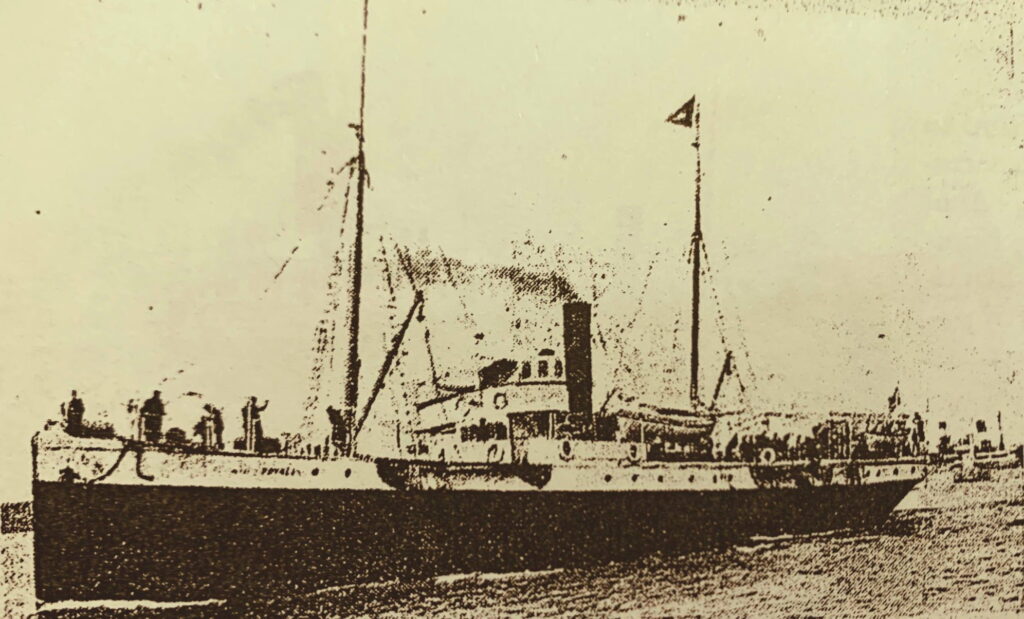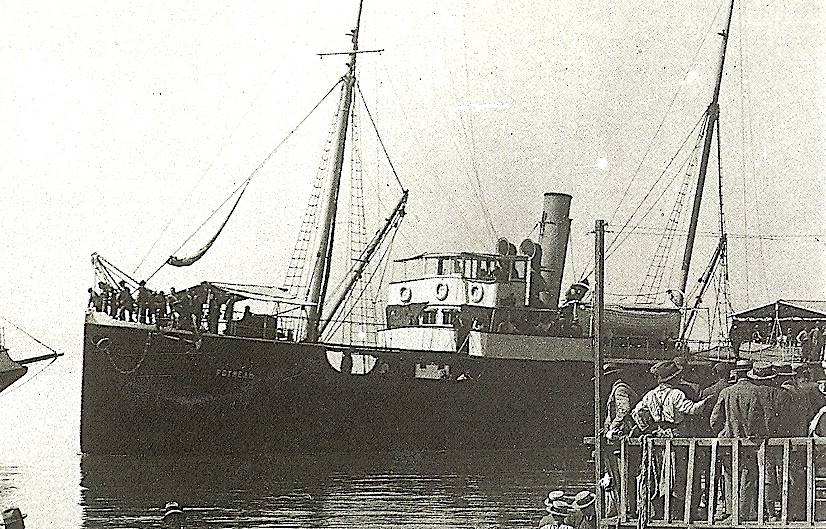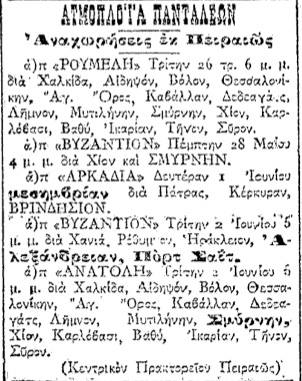
© uncertain
“Oh!” exclaimed Mabel onboard Roúmeli in Pigadia harbour, “How thankful I am to be under the Greek flag.”
Mabel’s obvious joy might have made her regret her earlier comment about Roúmeli being “a dirty little ship”, made after their voyage from Rhodes to Nisyros some weeks earlier.
Had she known, Mabel might have been doubly comforted in the knowledge that Roúmeli had been built in 1881 at Rutherglen on the River Clyde in Scotland by shipbuilder Thomas B. Seath & Co. She was designed as a cargo ship, originally called Operculum, and started her working life in the ownership of London-based Luke Thomas & Co., which operated ‘coaling’ services from the Yemeni port of Aden – maybe the reason for Mabel’s unflattering assessment of her note 1 .
At one point, Operculum was in service between Aden and the island of Socotra where, 12 years after their Karpathos visit, Bent was to contract the malaria which would bring about his premature death on his return to London in 1897.
By early 1885, Operculum had been acquired as part of the fleet of Syros-based M. Chrussachi and was operating under her new name of Roúmeli.
Mabel Bent’s chronicles tell us that the captain of Roúmeli, at the time of the kidnap of the Karpathos Lady, was sailing with his son, who was mate. Writing of the dramatic flagging down of the steamer, Mabel recounts: “We comforted ourselves with knowing the captain and his son/mate to be civil people.” Unfortunately, she doesn’t mention their names. However, Mabel does say that they were from Kassos and she gives us the name of a family member: “[We left] Pigadhia and on round the island; goodbye to Karpathos and N.W. to Kassos, where we remained 3 hours with all the captain’s relations on board, as this is his home. He introduced us to one just as he was going ashore, and we found him to be Kyriós Nichólas Mavrís, for whom we had a letter.” So – we have a link to the captain and we would be very grateful if you can provide any further information on Nichólas Mavrís and the family – please send us a message.

© uncertain
Roúmeli met with misfortune five years later on October 15th 1891 when she collided with another vessel at Syros and sank. She was salvaged and repaired and continued in service under her new Syros-based owners, Pantaleon & Co note 2 .

Pantaleon & Co departure schedule showing Roúmeli’s itinerary
Roúmeli later operated in the North Aegean and the ‘Greek’ islands and cities along the Turkish coast. An itinerary from May 6th 1920 shows her leaving at 6 in the evening for a typically epic voyage from Piraeus to Chalkida (Evia), Aedipsos (Evia), Volos, Thessaloniki, Agion Oros (Mount Athos), Kavala, Dedeagats (present-day Alexandroupolis), Limnos, Mytilini (Lesvos), Smyrna (present-day Izmir), Chios, Karlovasi (Samos), Vathy (Samos), Ikaria, Tinos, Syros. The part of the voyage to Volos, through the narrow Strait of Euripus separating the Greek mainland and the island of Evia, must have been particularly challenging; strong tidal currents reverse direction once every six hours, creating vortices and maelstroms note 3 .
After an action-packed career, including surviving shelling by Turks at Smyrna, Roúmeli finally succumbed to the breakers’ hammers in Italy in 1933 at the tender age of just 52. She must have been worn out, poor thing!
 Leave a comment about this comment
Leave a comment about this commentNotes
Return from Note 1
Return from Note 2
https://en.m.wikipedia.org/wiki/Euripus_Strait
http://articles.adsabs.harvard.edu/full/1929AN….236..321E
Return from Note 3
Article ©2021 copyright Alan King.
